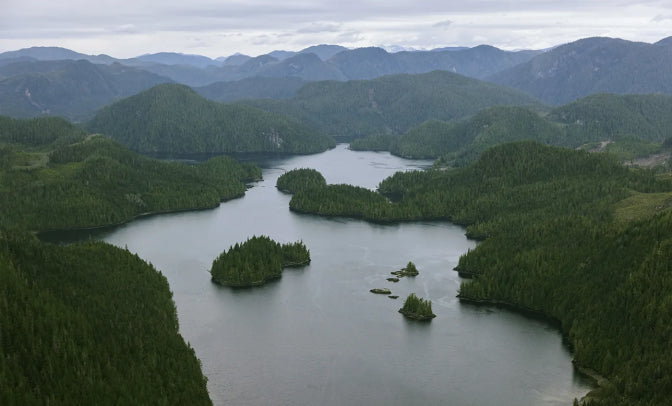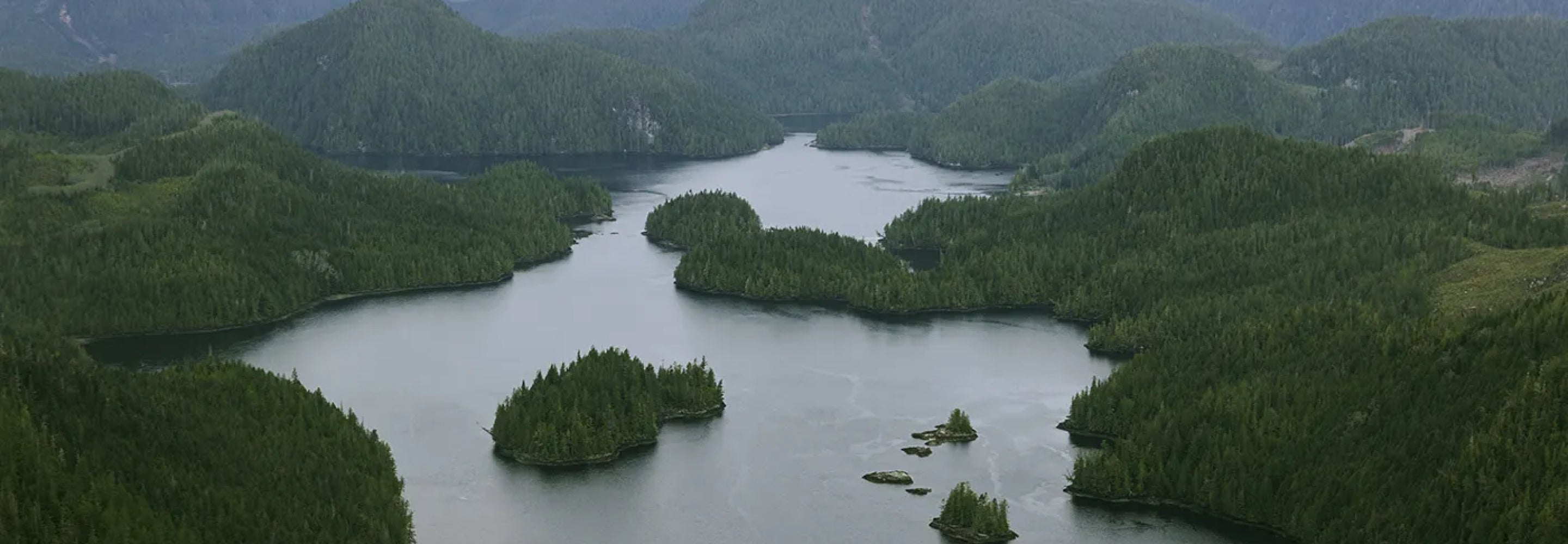
How one family has traded carpools for tidal pools and is raising their kids to live in the open, surrounded by nature.
The Great Bear Rainforest is a destination that’s all about the journey. Spread across the inlets and islands of British Columbia’s Pacific Coast, roads that crisscross the rest of the mainland don’t go there. Once you fly in by seaplane, there aren’t libraries, movie theaters, or any of the things that preoccupy most children—but there are millions of hectares of untouched, old growth forest. Fog hides its shorelines for much of the summe, and ice barricades its bays in the winter. Getting in and out of the region can be a challenge, but Fraser Murray navigates the landscape with ease—after all, this is where he chooses to raise his family.
On warmer mornings, he can often be found with his two daughters (ages 8 and 5) going for long walks along the coastline of Nimmo Bay, examining tidal pools and looking for crabs and starfish. The girls compete for who can find the most colorful specimens, knowing that this area is home to purple, pink, orange and even cobalt blue specimens—far more vibrant and memorable when held in a tiny hand than when observed in the pages of a textbook.

Life in the woods, however, is not without its challenges for two young girls. Getting them back to Victoria and keeping in touch with school friends is an ongoing challenge, just as dealing with the flow of guests through the lodge. “It can be tough when you have new friends every four days,” says Murray, but he sees the rotation of guests as not a problem, but a prospect—it exposes his children to worlds they may not encounter elsewhere. Visiting musicians provide impromptu music lessons. Travellers from around the world share their stories. Foragers who come to Nimmo Bay allow the girls to tag along on their excursions and learn about the forest’s many bounties, such as how to dig for mushrooms, and which poisonous things to avoid. The girls, like their father, are consummate hosts—they enjoy engaging with visitors and often have as much to say as any of the seasoned guides (many times their age!) about where to find the best starfish, or which trees are best for hide and seek. It’s a wild upbringing, but a well-rounded one.
Passing on his own confidence in nature is a guiding principle of Murray’s and his wife’s approach to parenting. Knowing the various species of plants, or where to find the most colorful starfish, or how to avoid bear encounters is, after all, the type of knowledge that attracts guests from around the world to visit Nimmo Bay. Life out here is a challenge, but it is also his family’s greatest asset.
Back to Blog






